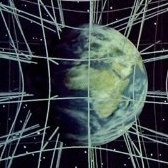Leaderboard
Popular Content
Showing content with the highest reputation on 12/20/20 in all areas
-
I gave this a try but I haven't been successful gathering a good description. How far have you got regarding the Weisfeiler-Lehman heuristic for graph isomorphism testing mentioned in the paper? As far as I know that works for undirected graphs. Chapter 7 of this paper mentions the excessive running time: https://www.lics.rwth-aachen.de/global/show_document.asp?id=aaaaaaaaabbtcqu I am not in a position to speculate if the researchers used undirected graphs due to performance and/or to cluster graphs with similar properties together. In any case, I find this interesting so if you have already got an answer, or anything to add to continue the discussion I am interested. In case you are interested, these show links may help Expressive power of graph neural networks and the Weisfeiler-Lehman test: https://towardsdatascience.com/expressive-power-of-graph-neural-networks-and-the-weisefeiler-lehman-test-b883db3c7c49 Introduction to Weisfeiler-Lehman https://davidbieber.com/post/2019-05-10-weisfeiler-lehman-isomorphism-test/1 point
-
That seems to cover all bases. But it's meaningless. You seem good at that.1 point
-
I have asked you politely for a simple example, posted here. A moderator has given you a specific instruction to follow the rules with your postings yet you continue to defy and argue with the rules., rather than complying with them. and do so in your other threads as well. I have formally reported this. For your information, anything you refer to on another site may be removed or changed by that other site by the time another member her come to try to read it. This could happen after 5 minutes, 5 hours or 5 years. This forum prides itself that this ensures that, if it is still here in 5 years time, a serious scientific thread will still be intelligible even if the other site has long gone. Scienceforums has maintained this reputation over nearly 20 years, whilst many other sites have definitely bit the dust or changed.1 point
-
It looks very similar to this thread: https://www.scienceforums.net/topic/123025-python-tree-program-multiple-children-module-error/?tab=comments#comment-1152593 have you tried that?1 point
-
There is no “discrepancy”, so the point is moot. Non-sequitur. If you arrive at some kind of “discrepancy”, then that means you did something wrong, plain and simple. Tensor calculus is not a “theory”, it’s a mathematical framework that has been extensively developed, and is fully self-consistent.1 point
-
I'm trying to figure out what, exactly, fuses. Magma is composed mostly of silicates ( oxygen, sodium, magnesium, silicon, calcium, potassium and iron ). Of these, assuming you could have a plasma, iron is a dead end for fusion ( no matter how small the atoms get ? ). The lightest element which could fuse, would be oxygen, but, as that requires 1.5 BILLION deg K, I really don't see how it is even being considered in this discussion.1 point
-
1 point
-
@Ghideon and @Dagl1, thank you both for your input and ears. My intent for this thread now, seeing as it has gained some traction and as I have a small audience of two, is to lay out what I can figure out on my own and, through this process, more precisely hone in the nature of my mental shortcomings pertaining to this task. Hopefully, the process of documenting my progress with this reproduction will be informative and potentially useful to people who are also uncertain about how to proceed in such things. As @Dagl1 mentions, I want to avoid unnecessarily calling upon others to hold my hand along the way and, quite frankly, I need to learn how to do this sort of thing myself. I think that later tonight I will begin by presenting an overview of some pieces of the research. In addition, I may provide a tutorial-like explanation of how to use Google Cloud. Learning how to use this service is probably the first step since unlike Google Colaboratory, which can stop at any point and is not too robust, the Cloud affords great precision and a wide array of services to understand the machine learning jobs people run through it. Thank you for listening thus far and I look forward to detailing further developments as they come.1 point
-
I'm glad nobody's time was harmed in the making of this movie. Good work. You might wanna change the spin of hadrons to 1/2. Just saying.1 point
-
What I meant, on PC when you hover atom, without clicking, there is displayed popup window, with atom details, where you can click and edit stuff e.g. change charge. on smartphone there is no hover, so pop up window does not show up, so user cannot edit stuff. on smartphone you can just click on atom, and wedge-dash notation is changed. I would try different approach: LMB on atom selects atom, and show popup window. LMB on bond to change wedge-dash notation or select bond (and make tools operating on one or more selected bonds). LMB neither atom nor bond, and together with movement (dragging), to pan. LMB with two fingers to zoom-in and zoom-out. Detection how many fingers clicked on HTML element you can do using this API: https://developer.mozilla.org/en-US/docs/Web/API/Touch_events Zoom in/out on PC you can implement using wheel event. https://developer.mozilla.org/en-US/docs/Web/API/WheelEvent When some atom is selected toolbox activates operations on it. e.g. delete, edit. When some bond is selected toolbox activates operations on it. e.g. delete, edit. You will also need select all, select none, toggle selection tools. BTW, I have huge issues with panning molecule view. i.e. entire page is scrolled top/bottom instead..1 point
-
1 point
-
Ok! I was curious if you had some facts to back up the statement or if it was a guess. I do not know, I have not studied this enough to provide an opinion. As for the paper in OP they obtained labels for smart contracts by running them through the Maian tool. To what extend that is tied to number of contracts and what it may imply for other methods I have not investigated.1 point
-
I'm not sure if you are asking how much rain would need to fall to cover the mountains, or how much water could conceivably fall as rain. You could start with the highest recorded rainfall figures here: https://edition.cnn.com/travel/article/extreme-weather-records/index.html Greatest rainfall in 24 hours = 1.825 m. So in 40 days and nights that would be 73 metres (about 240 feet?) Greatest rainfall in 1 minute = 31.2 mm. In 40 days and nights that would be 1797 metres (just under 6,000 feet) So it seems implausible that rainfall alone could flood things to the depth required (about 8855 m to cover Mt Everest by 22ft). Of course that assumes that the height of Everest hasn't changed significantly since then. So it sounds like your fictional "fountains of the deep" would have to provide the missing 7 km of water. As there is no data for these (for obvious reasons) you can invent any quantity and mechanism that you wish. Also, not a geologist, but I assume that intense rainfall, for an extended time, would cause significant changes.)1 point
-
Sorry but I keep rephrasing the question to possibly get it through some thick heads, so then maybe the question would be answered without so much extraneous info and opinions. Lol These are reworded again, below. What I'm looking for: 1. The volume of heaviest rainfall known to man for a specific time period (for example, an hour, a minute) rounded to 3 decimal points. 2. The volume needed to fill current Earth surface to 22' (or 6.706 meters) above highest known crust elevation (which seems to be Mt Everest). And possibly using a compared average elevation such as the 2nd reply to this question below presents? But it's sources are unknown... https://www.quora.com/What-is-the-average-elevation-of-Earth-above-the-ocean-including-land-area-below-sea-level-What-is-the-atmospheric-pressure-at-that-elevation 3. The volume of water required from subterranean source to make up the difference the 40 days/nights of rain would not drop onto the world. The water is available on and in the Earth, so it seems from recent discoveries. That's assumed available, but how is another day's topic. Thanks.-1 points
-
Markus Henke: remarked "Non-sequitur. If you arrive at some kind of “discrepancy”, then that means you did something wrong, plain and simple. Tensor calculus is not a “theory”, it’s a mathematical framework that has been extensively developed, and is fully self-consistent." The important point is that the conflict exists as projected in the paper. Can he refute the contradiction shown in the paper by finding errors with my calculation? It is clear that Markus Henke has has not found any error with my calculations which,incidentally, are not of a lengthy nature. If standard theory happens to be correct everywhere, as Markus Henke believes in, he should be able to point directly to errors in my calculations. If he really such found errors he would have been vocal about them.-1 points
-
The Taylor series has been analyzed in the enclosed paper in several ways to reveal discrepancies. The analysis is of course of a mathematical nature. Requesting the attention of the audience to the mathematics of the paper and the issues ensuing from it.... Taylor1000.pdf-1 points
-
Hi I’m a fictional writer now by trade but I’m composing a short educational work that talks about Creation Science and how it can possibly jive in many areas with other scientific discoveries or theories apart from Christian creation science. I’m not debating the issues against each other, but looking to expose how they can and do appear to be complimentary of each other when they are examined differently than the opponents of any group commonly seem to do. I’m posting this in two different independent forums. One is a Christian forum with creation science topics in it, and the other is a non-religious affiliated science forum. I tried to pick forums that had equal popularity and discussion traffic. I may have to post it in more if I do not get responses. So just that you know I’m a scientific friendly person in my professional experiences and I’m not the typical Christian believer who knows very little to nothing in regards to science, history, and other world religions. I’m definitely not an atheist or creator-less type either. I know a lot about my own faith in Christianity. I’ve worked as a civil engineer, computer systems engineer, federal investigator (computer/fraud/economic crimes), and my education degrees are in civil engineering, computer systems and networks engineering, and business administration with an emphasis in investment management and economic fraud detection and prevention. Some of my hobbies are making good friendships, learning new stuff and reexamining my old knowledge, target shooting, fishing, and mentoring my children. So let’s get to it... In Genesis Chapter 7, it says, “11 In the six hundredth year of Noah’s life, in the second month, the seventeenth day of the month, on that day all the fountains of the great deep were broken up, and the windows of heaven were opened. 12 And the rain was on the earth forty days and forty nights.” All the English translations agree that some version of “the great deep” was mentioned, and this indicates that water not only rained from the sky but came from the ground and/or from under the seas. I’ve been searching for someone who has calculated this scenario: Using modern historical weather data of heavy rainfall quantities, if we calculate how much water would fall if it steadily and heavily rained over 40 days (or 960 hours), over all of the Earth, how much water from “the great deep” would be necessary to completely cover every existing mountain top we currently have in our modern era? I’ve seen some online discussions of just rainfall not being enough to cover the highest existing peaks on our current landmasses, but no one made up the difference, or considered, with water from the ground (a.k.a. underground aquifers) also contributing to the flood. I’m not asking where the water would come from that rained and/or came from the deep. I’m not considering the ultimate water sources or their storage locations. I’m assuming the amount of water was available between the atmospheric water and underground water. I’m only curious in the amount of water, from two sources--rainfall and underground, it would take on the current Earth’s surface and what amount would be needed by the sub-surface water (“fountains of the great deep”) to cover all the Earth’s surface and it’s highest peaks by about 22 feet. Does this make sense? If you want to also comment on how such huge amounts of water accumulating on the Earth’s surface might affect the landmasses/surface elevations, shapes of the continents, etc, and how massive erosion would sweep huge portions of the Earth’s surface around as it subsided and flowed downward again, that would be welcomed. I think it’s a given that massive amounts of water flowing downward (back into the Earth and seas) would cause massive land carving, so where is the evidence of that in archaeological findings? What has been found in the oceans that could have originated from landmasses in the Earth’s current mountain ranges? If the great Genesis flood wasn't 100% across all earthen landmasses, what might show that (the north and south poles, etc)? What if snowfall/ice fell instead in the colder climates? I’m just throwing out a couple of questions for brainstorming. Thank you and I’ll be sure to give you credit for anything I use. It’s a not for profit paper I’m writing so I’m sorry I can’t pay you! lol-1 points











